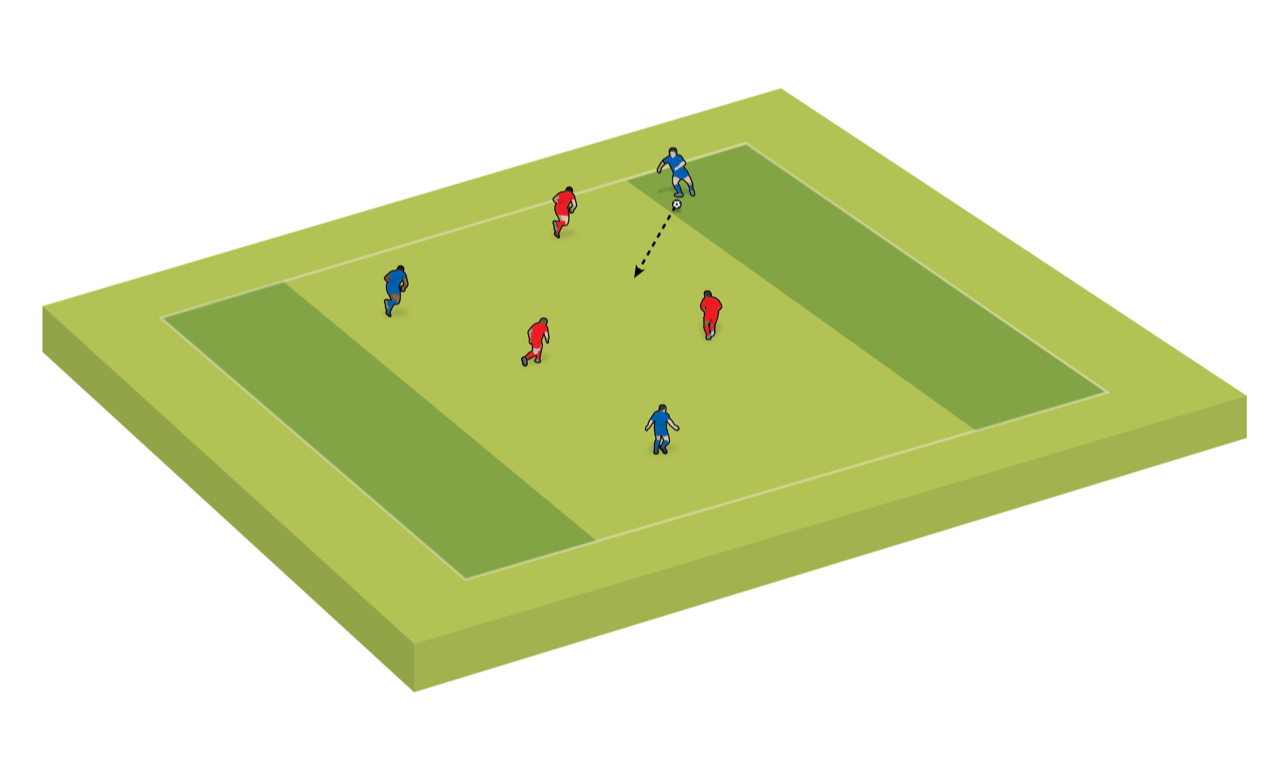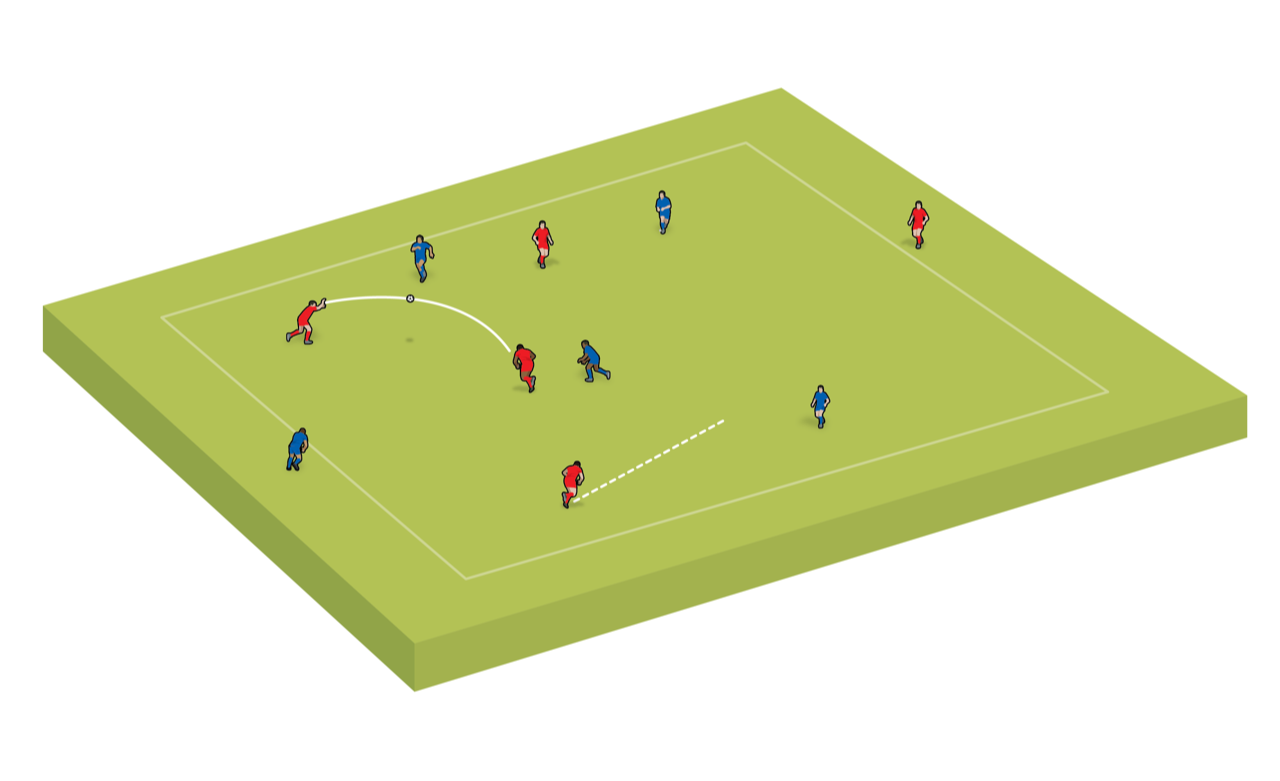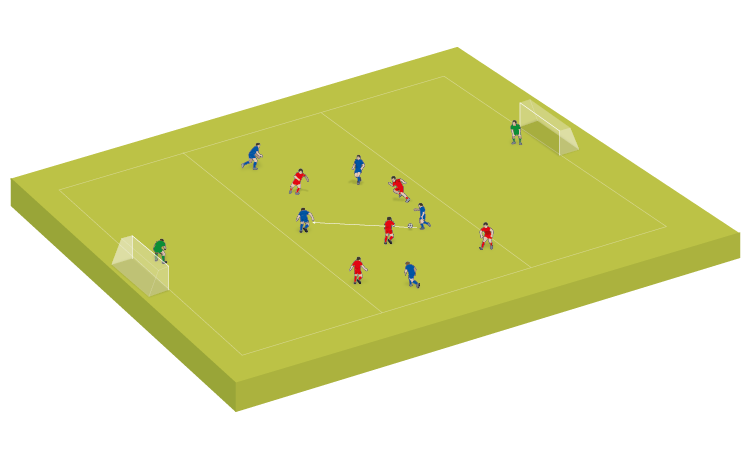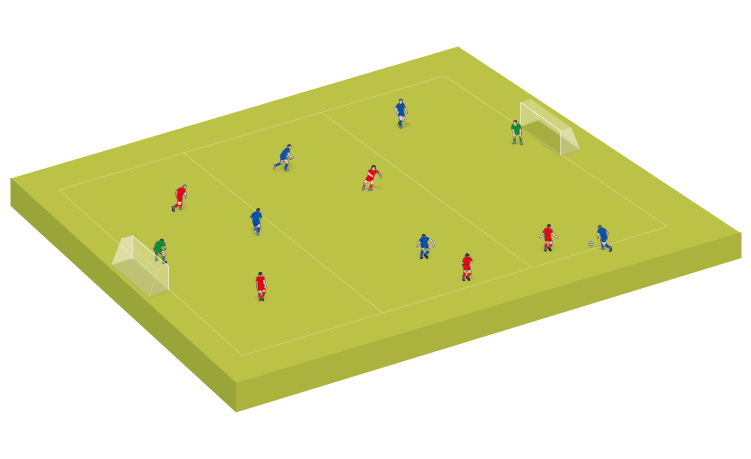Pre-season | Week 4: Stepping up
The last pre-season training session is all about stepping up and brushing up. You’re looking for the final pieces of the jigsaw to fit into place with your players, as they put into practice everything they’ve learnt so far.
The start of the season is almost upon us, and over the last three weeks you’ll have seen your players getting into the sort of physical and mental shape that is going to guide them through a long season ahead.
The last pre-season training session is all about stepping up and brushing up. You’re looking for the final pieces of the jigsaw to fit into place with your players, as they put into practice everything they’ve learnt so far.
Timeline
0mins: Light jogging
3mins: Static stretches
6mins: Light jogging
9mins: Dynamic stretches
12mins: Running with the ball
20mins: Refresh drills from previous weeks
40mins: Formation shape
55mins: Small-sided game
75mins: Warm down
85mins: Feedback
As always, a decent warm-up is essential. Repeat the ideas from the previous sessions though this time incorporate jumping and bounding so as to really stretch your players, making the most of their ever-strengthening aerobic base.
Five Minute Warm up: Centre circle sorcery
Pre-season training – Zidane challenge
Running with the ball
It’s good to get players running with the ball quickly too. Sometimes dribbling drills can be complex and convoluted, but even a simple ‘run and lay off’ practice will get players rehearsing close control and positive movement. In the example given, we’ve just placed two cones 20 yards apart with a player on each cone and a running player in between. Each time the running player gets to a cone he passes to a team mate who then sprints to the opposite cone with the ball, and so on. Remember to shorten or lengthen the distance between the cones to decrease or increase the intensity.
Running With The Ball
Basic running with the ball
Refresh drills from previous weeks
It’s always a good idea to reference again practices from the previous sessions in which you feel your players could still improve. So whether their ball control needs work, their crossing and finishing could be improved upon, or the intense 1v1s could be better played out, always go back over old drills. Players will approach them fresh and optimistic of performing better than they did last time.
Formation shape
The final training session also offers a great opportunity to rehearse shape work and other tactical ideas prior to the opening match of the season. You should have a clear idea of how you want your team to play, so run through some basic ideas with players, and do the drills unopposed at first so as not to complicate the procedure.
9v9 formations: 1-3-1-2-1
Player positions in a diamond defence
Either gradually bring in opposition players, or go straight into the small-sided game to see players putting the ideas into immediate practice.
Supporting runs
Four pass strike
Feedback
After the small-sided game, you should get your players to warm down, then sit them around in a circle and ask for their feedback on pre-season. The players should be feeling a lot fitter, with a collection of tactical and technical ideas that’s small enough for them to learn well whilst not being overbearing or difficult to remember.
PRE-SEASON TRAINING ESSENTIALS
No.5: Injury worries? Many coaches worry that players returning from a break are susceptible to injuries during pre-season, meaning they miss the start of the campaign.
But research carried out by European sports psychologists Brito, Rebelo, Soares, Seabra, Krustrup and Malina found that fears were largely unfounded. A total of 912 youths aged 12 to 19 years were assessed during the preseason of 2009/10 season, with clubs’ medical staff recording all injuries. From this, estimated injury rates per 1,000 hours of action were calculated. On average, there were just 1.8 injuries per 1,000 hours of pre-season training and 6.7 injuries per 1,000 hours in pre-season matches. Injuries were sustained by 7.2% of players during pre-season, and 79% of those injuries involved the lower limbs, of which 23% were located to the thigh.
Muscle strains and contusions were the most common injuries caused by tackles. The researchers found that there was no age-related trend in the incidence of pre-season injuries, and that during this training period, coaches should expect their players to sustain a majority of muscle strains, especially in the thigh region.
Newsletter Sign Up
Coaches Testimonials

Gerald Kearney, Downtown Las Vegas Soccer Club

Paul Butler, Florida, USA

Rick Shields, Springboro, USA

Tony Green, Pierrefonds Titans, Quebec, Canada
Subscribe Today
Discover the simple way to become a more effective, more successful soccer coach
In a recent survey 89% of subscribers said Soccer Coach Weekly makes them more confident, 91% said Soccer Coach Weekly makes them a more effective coach and 93% said Soccer Coach Weekly makes them more inspired.
*includes 3 coaching manuals
Get Weekly Inspiration
All the latest techniques and approaches
Soccer Coach Weekly offers proven and easy to use soccer drills, coaching sessions, practice plans, small-sided games, warm-ups, training tips and advice.
We've been at the cutting edge of soccer coaching since we launched in 2007, creating resources for the grassroots youth coach, following best practice from around the world and insights from the professional game.








